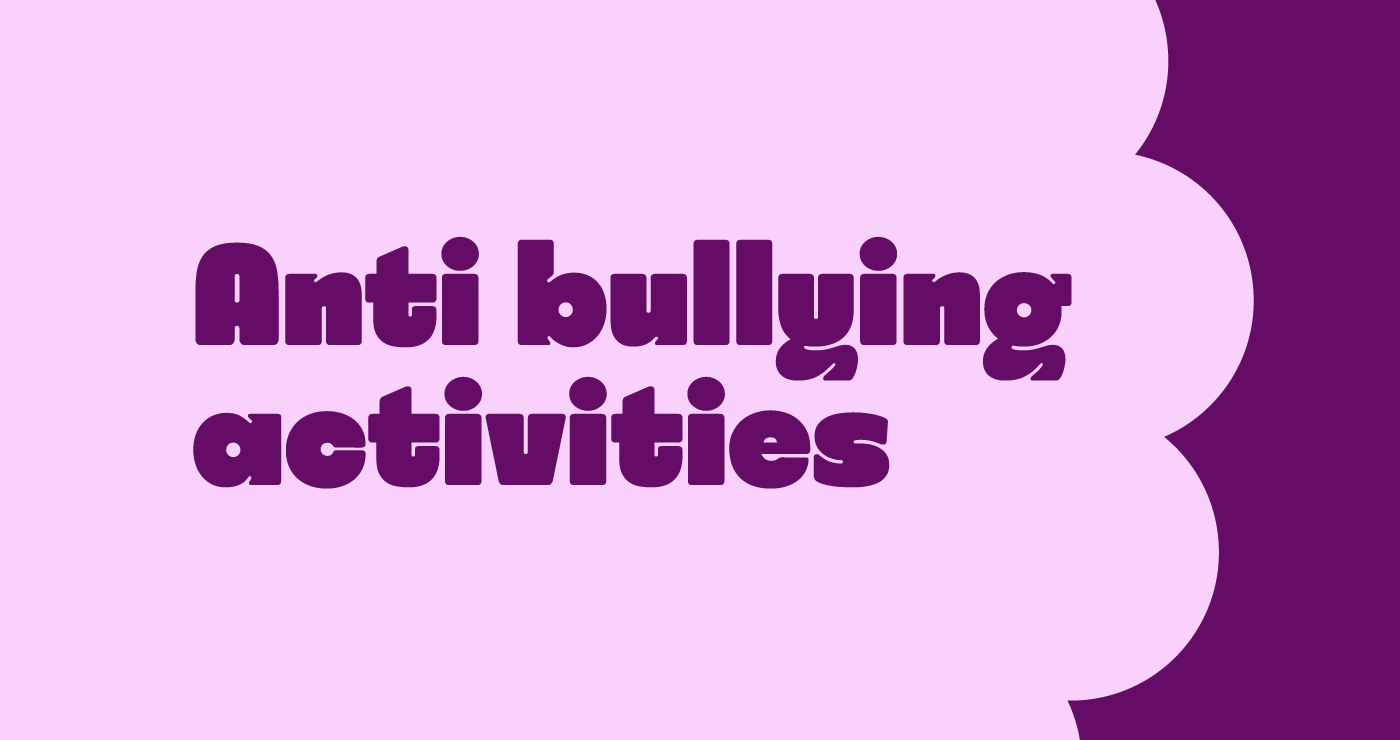15 Anti Bullying Activities to Support a Safe and Respectful Classroom

Bullying can have lasting effects on a child’s confidence, learning, and wellbeing. The best way to prevent it? Educate, engage, and empower students with strategies that encourage kindness, awareness, and action.
This blog offers practical anti-bullying activities for your classroom, along with ways to start meaningful conversations and create a safe learning environment.
💡 Looking for a structured approach? Check out our companion blog on Anti-Bullying Lesson Plans.
Why teach elementary school children about bullying?
Early education is the key to prevention. Students should be able to:
- Identify what bullying behavior is, and what it’s not
- Recognize different types of bullying
- Understand the impact of bullying on others
- Know how to safely reach out if they witness or experience bullying
Types of bullying to discuss
Firstly it is good to make sure your students understand the differences between;
- Physical bullying — the use of physical harm and or pain through aggressive pushing, knocking them over, and breaking their possessions.
- Cyberbullying — bullying is not new, but the internet provides a new tool for bullies to reach their victims outside of school premises through social media. Victims of cyberbullying are often subject to anonymous name-calling messages, nasty comments, memes, and sharing photos of them without consent.
- Verbal bullying — when mean words are said to another student. This can be name-calling, threats, and rude words which are used again and again.
- Social bullying — repetitive attempts to make someone feel lonely and isolated by spreading rumors about them, trying to embarrass them, or using peer pressure to make them do silly or embarrassing things.
What do anti-bullying campaigns do?
Anti-bullying campaigns, such as bullying prevention month aim to teach students to understand the effects of bullying on people while they’re at school and once they leave the school gates. The social-emotional learning can help empower upstanders to stand up to bullying behavior and spread the anti-bullying message amongst their peers and younger students.
How can you promote an anti-bullying message in your classroom?
Creating a safe and open classroom starts with strong communication. Students should feel safe to speak about their experiences and know that bullying will not be tolerated.
You can:
- Raise bullying awareness regularly
- Open conversations about emotions and respectful behavior
- Model kindness, listen actively, and intervene when necessary
15 Anti-bullying activities to try in your classroom
Use these ideas to promote empathy, communication, and connection:
- Use Kami worksheets to help students identify different types of bullying.
- Start interactive discussions about the role of a bystander and how to safely intervene.
- Group reflection: In small groups, ask students how bullying might make someone feel, using “distanced” language to encourage open dialogue.
- Create a school-wide pledge against bullying, with student-sourced ideas.
- Role-play scenarios where students brainstorm how to support a peer being bullied.
- Design conflict resolution posters to display around the classroom.
- Celebrate cultural differences and educate students about diversity and inclusion.
- Promote kindness with “Kind Hands” posters and reward kind acts during the day.
- Creative writing: Ask students to write a diary entry or blog from the perspective of someone who’s been bullied.
- Discuss social media behavior, including what’s appropriate to share and say online.
- The crumpled paper activity: Write kind/unkind words on paper, crumple them, and discuss how words leave a mark.
- Poetry or storytelling: Create a story, poem, or skit teaching others how to be supportive bystanders.
- Anti-bullying posters: Display around school or share digitally if learning remotely.
- Affirmation writing: Use self-acceptance mantras like “I deserve respect” or “I am supported.”
- Create an upstander guide: Discuss what it means to speak up and support others.
Moving forward with confidence
Tackling bullying may feel overwhelming, but it starts with compassion, consistency, and communication. When students know their classroom is a safe and respectful space, they’re more likely to speak up and support one another.
Be observant, pay attention to body language, comments passed off as “jokes,” or students who appear withdrawn. Even small actions can make a big difference in preventing harm and building trust.
Additional Resources
Explore these trusted sites for more anti-bullying education tools and support:
Blogs you may also like

Virtual Campus School: Turning Learning Barriers into Breakthroughs with Kami

How Jeff Kilner and His District Transformed Teaching with Kami


